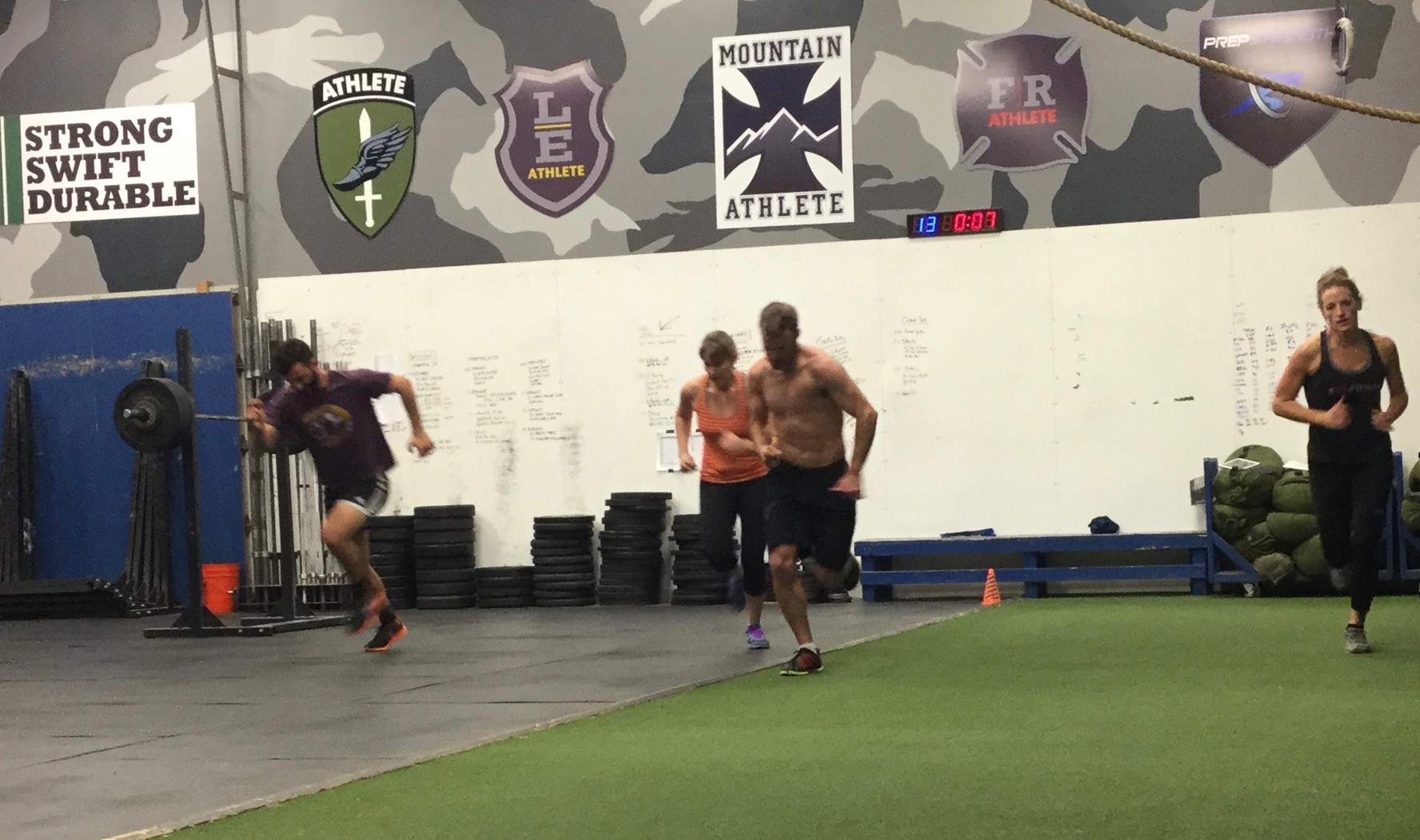By Adam Scott, MS, CSCS
Background:
VO2max or maximal oxygen consumption is a measure of an individual’s ability to utilize oxygen during increased exercise demand. It is measured in absolute terms (liters of oxygen used per min – L/min) and relative terms (milliliters of oxygen used per kilogram per min – ml/kg/min). VO2max is typically used as a predictor of endurance potential and is considered the premier measure of an athlete’s aerobic capacity.
We also know that VO2max is an important metric for both tactical athletes and mountain athletes. A 2012 study found that applicants to the Canadian Special Operations Regiment who had a VO2max over 55 ml/kg/min where about 6x more likely to successfully complete the program (16).
In a study examining the dominant Austria National Ski Team, over 30 different physiological variables were examined to determine their relationship with world class ski success. The only measure which correlated to ski performance was VO2max, which was highest amongst the most accomplished female and male racers – averaging over 56ml/kg/min and 60ml/kg/min, respectively (17).
Measuring VO2max:
Unfortunately, accurately measuring VO2max typically requires expensive equipment, time-consuming protocols and individual testing.

Luckily there are ways to estimate VO2max. The American College of Sports Medicine (ACSM) created an assessment which can be completed on almost any treadmill. They also developed a corresponding equation to estimate VO2max. The Copper Institute, a leader in aerobic fitness research, has a few protocols which can be used to estimate VO2max, including a 12-minute run for distance and 1.5-mile run/walk.
ACSM Equation: Running (1)
VO2max (ml/kg/min) = 0.2*Speed (m/min) + 0.9*Speed*Grade (m/min*percent +3.5
Cooper Test: 12-min Run for Distance (2)
VO2max (ml/kg/min) = 35.97*Distance (miles/12min) – 11.29
Cooper Test: 1.5-mile Run/Walk (2)
Male: VO2max (ml/kg/min) = 91.736 – 0.1656*Weight (kg) – 2.767*Time (min)
Female: VO2max (ml/kg/min) = 88.020 – 0.1656*Weight (kg) – 2.767*Time (min)
Recently, the use of multi-stage fitness tests (MSFT) have become increasingly popular. These tests require athletes to complete continuous shuttle-style runs (typically 20 meters) at prescribed paces. To control an athlete’s speed, a timing device (usually an audio CD or file) beeps at a given interval to indicate the prescribed pace (4-7). Although there are many variations to these tests (Yo-Yo IR1, Yo-Yo IR2, Montreal, Multistage, Shuttle, etc.), they are generally grouped together as “Beep Tests” (9-14).
Beep tests are most prominent in sports settings where athletes’ aerobic requirements include longer, moderate efforts and short, intense intermittent sprints – like rugby, hockey and soccer (18).
Multistage Beep Test Equation (3)
VO2 max = (31.025 + 3.238*velocity) – (3.248 × age ) + (0.1536 × age × velocity)
Developing the MTI 15/15 Shuttle Beep Test:
Weighted and unweighted interval-sprints are among our most used exercises. Our programming employs a number of different distances, intervals and paces, but among the most popular is the 40ft shuttle. Partially because of the limitations of our facility and partially because of the importance of 3-5 second “rushes” in infantry tactics (19-22).
With this in-mind, and winter confining us to the covered spaces of our Jackson gym, we set-out to design a functional, gym-based aerobic assessment. Our criteria was simple: (1) We wanted the test to be as simple as possible, (2) We needed it to closely mimic the demands of an intense tactical situation, and (3) We wanted it to show a strong correlation to the other established tests and estimates.
We tested a few different variations, but ultimately settled on the following protocol:
-
- Athletes complete 4 shuttle lengths of a given distance within a 15-second time limit.
- After completing the 15-second shuttle interval the athlete rest 15 seconds.
- Immediately following the rest, the athlete will complete another 4 shuttles of a given distance within a 15 second time limit (i.e. 15sec Shuttles / 15sec Rest).
- The shuttle distance will begin at 30 feet and increase 2 feet after two successful rounds.
- This format will continue until the athlete fails to make the shuttle distance.
- An athlete’s score is determined by the last, successfully completed shuttle.
Table 1: MTI Shuttle Beep Test Protocol
Video: MTI Shuttle Beep Test
Assessing our assessment:
Obviously no assessment is perfect. However, based on our preliminary results, we are optimistic that the MTI 15/15 Shuttle Beep Test might offer a simple, accurate, and “sport-specific” VO2max estimate for tactical athletes.
Using Pearson’s r to assess the relationship to actual VO2max we have found the MTI Beep Test to have a correlation of 0.90 (P <.01). This is higher than most studies have found using Beep Tests, 1.5-mile runs and ACSM protocol (1,14,18).
Table 2: VO2max Estimate Testing Correlations
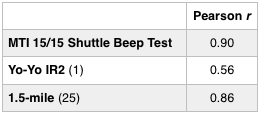
Graph 1: VO2max and MTI Shuttle Performance
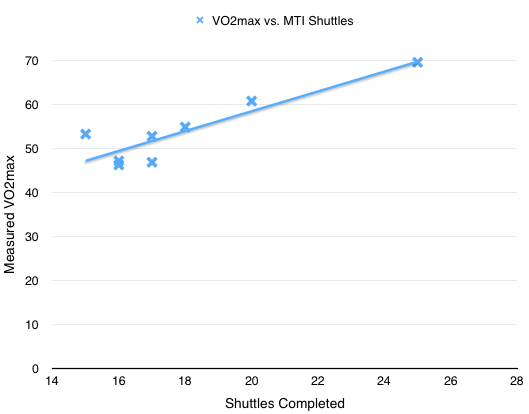
Table 3: Athlete Data
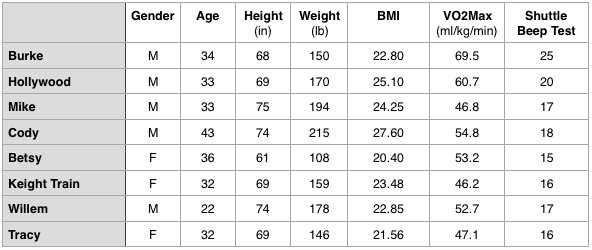
We were also able to derive two “evolutionary algorithms” which use data from the MTI Beep Test to estimate VO2max. These two equations are still early in their evolution – we are continuing to “train” them as we collect more data. However, even now, these early forms seem to out-perform most standardized estimations (1,14,18, 23-24).
MTI Equation 1:: Age, BMI, Shuttles
- VO2max (ml/kg/min) = 12.73 – 0.0062*Age(yrs) – 0.0038*BMI + 2.244*Shuttles
MTI Equation 2: Age, Hgt, Wgt, Shuttles
- VO2max (ml/kg/min) = 16.137 – 0.0062*Age(yrs) – 0.017*Height(in) + 0.0017*Weight(lbs) + 2.244*Shuttles
Table 4: Comparison of Predictive Equations

Table 5 / Graph 2: Predicted VO2max and Actual VO2max

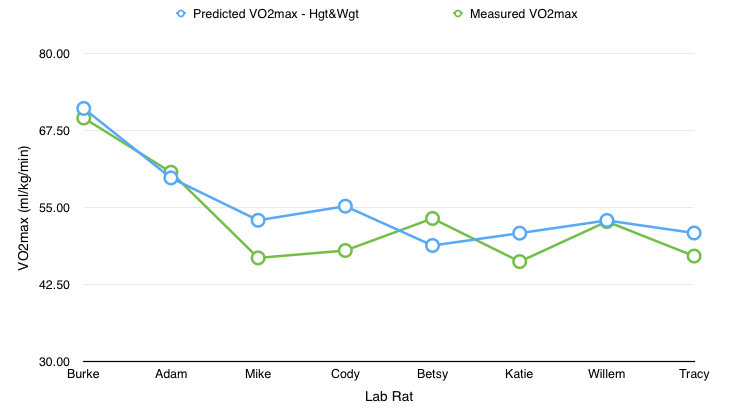
Lastly, we used heart rate monitors to measure and assess the physiological loads our athletes experienced during the MTI Shuttle Beep Test. We did this for two reason. First, we wanted to make sure athletes reached a “maximum” effort. Second, we wanted to see how the 15 second rest interval effected heart rates during the increased physiological demand. Figure 1 and Figure 2 show some of the HR metrics for a few of our lab rats.
Figure 1: Athlete Heart Rate during MTI Shuttle Beep Test
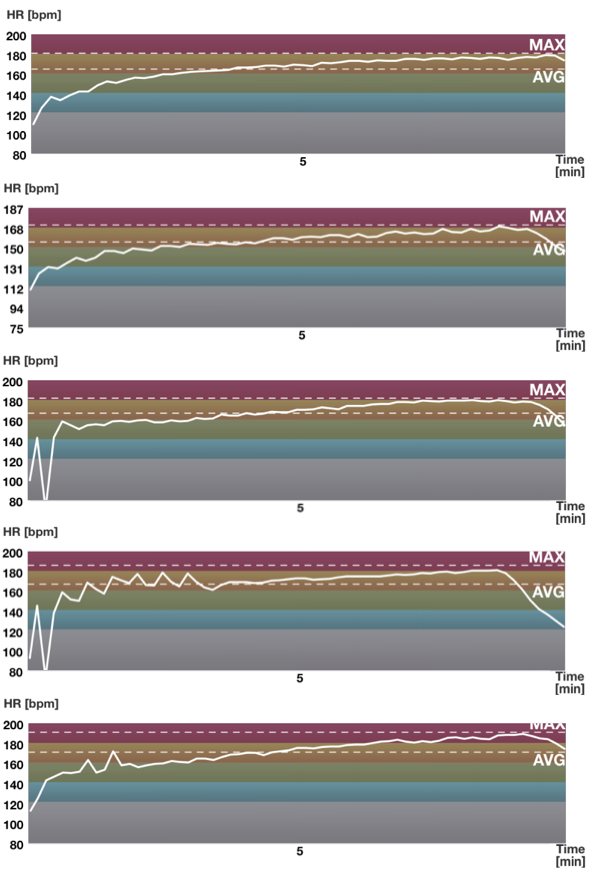
Figure 2: Athlete Heart Rate Zones during MTI Shuttle Beep Test
Conclusions and Way Ahead:
Although it is still early, our preliminary results are promising. The MTI Shuttle Beep Test (SBT) requires a minimal amount of space, a simple measuring device, and a timer – things which are readily available almost anywhere.
Additionally, the high correlation found between the MTI SBT and VO2max is encouraging (r = 0.90, p <.05). As is the ability to use the SBT score to accurately estimate VO2max (R Squared = .78, SEE = 4.95 ml/kg/min). Finally, heart rate data (Figure 1 and 2) seems to support the use of the 15/15 shuttle protocol. Even with its intermittent nature, athletes experienced a steady and significant rise in heart rate (physiological effort) – allowing them to reach a max or near max effort.
Based on these four factors, the MTI SBT seem like it could be a simple and reliable way to estimate VO2max.
However, despite its promise, the MTI SBT, still needs to be tested for validity and reliability. This means we need to keep gathering data and “training” our equation. More variety in our athlete data pool and the more data points will allow us to add statistical power and significance to our results.
References:
- Krustrup, P., Mohr, M., Nybo, L., Jensen, J., Nielsen, J. and Bangsbo, J. The Yo-Yo IR2 Test: physiological response, reliability, and application to elite soccer. Med Sci Sports Exerc; 38(9): 1666-73, 2006.
- Metabolic Equations for Gross VO2 in Metric Units. Available: http://certification.acsm.org/metabolic-calcs. Accessed: 25 November, 2015.
- Ahmaidi S, Collomp K, Caillauce C, Prefaut C. Maximal and functional aerobic capacity as assessed by two graduated field methods in comparison to laboratory exercise testing in moderately trained subjects. Int J of Sports Med 13(3):243-248. 1992.
- Léger, L.A. and Lambert, J. ‘A maximal multistage 20m shuttle run test to predict VO2max’, European Journal of Applied Physiology. 49: 1-5. 1982.
- Léger, L.A., Lambert, J., Goulet, A., Rowan, C., and Dinelle, Y. Capacité aérobie des Québécois de 6 à 17 ans — test navette de 20 mètres avec paliers de 1 minute. Canadian Journal of Applied Sport Sciences. 9(2): 64-69.1984.
- Ramsbottom et al. A progressive shuttle run test to estimate maximal oxygen uptake. British Journal of Sports Medicine 22:141-145.1988.
- Brewer, J., Ramsbottom, R., and Williams, C. Multistage fitness test: A progressive shuttle-run test for the prediction of maximum oxygen uptake. Belconnen, ACT: Australian Coaching Council. 1988.
- Brewer, J., Ramsbottom, R., and Williams, C. Multistage fitness test: A progressive shuttle-run test for the prediction of maximum oxygen uptake. Leeds, UK: National Coaching Foundation. 1988.
- Leger, L. and Gadoury, C. ‘Validity of the 20m shuttle run test with 1 minute stages to predict VO2max in adults. Canadian Journal of Sport Science. 14(1): 21-26. 1989.
- Riddoch CJ. The Northern Ireland health and fitness survey -1989: the fitness, physical activity, attitudes and lifestyles of Northern Ireland post-primary schoolchildren. Belfast: The Queen’s University of Belfast. 1990.
- Australian Sports Commission. 20 m shuttle run test: A progressive shuttle run test for measuring ærobic fitness. Belconnen, ACT: Australian Coaching Council. 1990.
- Tomkinson, G.R., Léger, L.A., Olds, T.S., & Cazorla, G. Secular trends in the performance of children and adolescents (1980–2000): An analysis of 55 studies of the 20 m shuttle run in 11 countries. Sports Medicine. 33: 285–300. 2003.
- Olds, T, Tomkinson, G, Léger, L and Cazorla, G. Worldwide variation in children’s fitness: a meta-analysis of 109 studies on the 20m shuttle run from 37 countries. Journal of Sports Sciences. 24(10). 2006.
- Koutlianos, N., Dimities, E., Metals, T., Deligiannis, A. and Kouidi, E. Indirect estimation of VO2max in athletes by ACSM’s equation: valid or not? Hippokratia. 17(2): 136-140. 2013.
- Cooper 1.5-Mile Run / Walk Test. Available: https://www.humankinetics.com/AcuCustom/Sitename/DAM/082/Cooper_Walk_Run_Test.pdf. Accessed: 25 November, 2015.
- Carlson, M.J. and Janen, S.P. The Development of a Preselection Physical Fitness Training Program for Canadian Special Operations Regiment Applicants. J Strength Cond. Res. 26(7):S2-S14, 2012.
- Neumayr, G. and Eibl, G. Phyiscal and physiological factors associated with success in professional alpine skiing. Int. J. of Sports Med. 24:571-575, 2003.
- Tumijan, W., Rahit, A., Abdullah, N., Adnan, R. and Parnabas, V. The relationships between 20-m Multistage Fitness Test and Yo-Yo Intermittent Fitness Test in measuring cardiovascular fitness among Kuching Sarawak rugby players. Proceedings of the International Colloquium on Sports Science, Exercise, Engineering and Technology 2014. Part III: 277-282. 2014.
- Army, H.D.o.t., Combat Skills of the Soldier. 1984.
- Army, H.D.o.t., The Infantry Rifle Platoon and Squad. 2007: Headquarters Department of the Army.
- Larsen, C.E., Light Infantry Tactics For Small Teams. 2005, Bloomington Indiana: Author House 3/16/05. 243.
- Colonel John Antal, P.P., ed. Attack the Enemy’s Strategy Lessons from Counterinsurgency Operations. 2009, Elbit Systems of America, Historical Explorations.
- Cooper KH. The Aerobics Way, New York: Bantam Books. 1977.
- FM 21-20 Physical Fitness Training. Calculation of VO2max. Headquarters, Department of the Army, Washington, DC. 1992.

